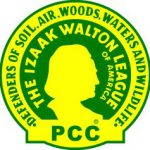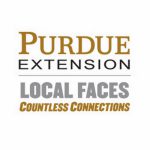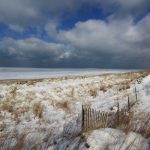The following is a transcript of an August 21, 2012 interview, if you would like to get more involved on this topic, click here to register for an upcoming webinar on Thursday, February 21st at 10am.
219 GreenConnect podcast host Kathy Sipple speaks with Nicole Barker (NB), Executive Director, and Nathan Pavlovic (NP), Land and Advocacy Specialist at Save the Dunes about the oil pipeline company Enbridge Energy and their plans to construct approximately 60 miles of new pipeline for the transportation of tar sands through Northwest Indiana. The construction will involve excavating approximately 30 rivers and streams in the Lake Michigan Watershed and impacting wetlands along over 4 miles of the pipeline’s length.
KS: I am Kathy Sipple and I would like to welcome you to the 219 Green Connect show where we explore topics about the environment and green living in Northwest Indiana. For archived podcasts news and upcoming events in Northwest Indiana, please visit our website at 219 Greenconnect.com or connect with us on Facebook or Twitter. To make sure you don’t miss an episode, go ahead and subscribe to the podcast via iTunes. Today my guests are Nicole Barker, who is executive director at Save the Dunes and Nathan Pavlovic who is the land and advocacy specialist at Save the Dunes and we are here to talk about the Enbridge Energy company and their plans to construct about 60 miles of new pipeline for the transportation of tar sands oil through Northwest Indiana. Let’s go ahead and turn it over to Nicole and Nathan, Thank you so much for joining us this morning.
NB: Thanks for having us Kathy! Just to lead, I would like to provide a little bit of information about Save the Dunes as an organization. This year we are celebrating our 60th year anniversary and as one of Northwest Indians oldest environmental groups, our formation had a lot to do with the formation and protection of the Indiana Dunes National Lakeshore which is our states only major national park. In the years following we have had to change our approach in the Indiana Dunes including fighting off plans for nuclear plant, a jet port in the lake and other threats that have come up over the years. And over the years one of the things we have been keenly been focusing on is pollution that has been coming in with a lot of industrial development in the region, in particular, the Enbridge project peaked our interest because it is crossing somewhere on the order of thirty waterways that flow into lake Michigan and the Indiana dunes. We want to make sure all due diligence is done to protect those waterways and of course to protect public safety as well.
KS: Sure, that’s a great background on Save the Dunes and I would like to make a shout out. If anyone would like to learn more about Save the Dunes, I included a link to their website on our show description but let us go ahead and give out a website and other ways people can connect with you.
NB: Sure our website is www.savedunes.org. And we have quite a bit of information on there and we have a very active Facebook page with timely information about Enbridge and projects impacting the environment in Northwest Indiana. You can just search for Save the Dunes on Facebook.
KS: Great, That’s wonderful, if you can get in there and re-tweet and Facebook about this issue we are going to add some information about public hearing events and get involved if you would like to have your voice heard or if you are concerned about this project.
What are the concerns about this project and what is a little bit of background about tar sands oil? Can you describe a little bit about tar sands oil versus other types of oil?
NP: Right, so as Nicole mentioned some concerns about this pipeline is that it is going to be crossing 30 streams and rivers in Northwest Indiana so opportunities for contamination of water during construction or operation are concerns so we want to make sure due diligence is done by state regulators to make sure those resources that are very precious to this region are protected. In terms of the tar sands oil, that is oil that comes down from Canada and its extracted from sandy deposits of oil and it’s a bit different from standard oil because it’s a bit heavier than regular oil and its more acid and is stickier which makes it more hazardous than other kinds of oil. One of the things with tar sand oil, and this is something they have dealt with in Michigan is, when Enbridge caused a spill in the Kalamazoo river is that, in order to get the oil to flow through the pipeline, by products of natural gas production are used to dilute the oil. That helps the oil flow but when there is a spill, that byproduct evaporates which turns that tar sand back into a clay like substance, a really dense heavy material. When that happens, unlike standard crude oil, tar sands oil will sink to the bottom. As a result, in the Kalamazoo, they have had to spend over 800 million dollars cleaning that river because essentially you need to dredge the bottom of the river. They have to essentially dig up and reconstruct the river bottom and so far they have spent over 800 million dollars doing it. So making sure that all necessary safety precautions are taken on this line is really important since a spill in these waterways would be absolutely disastrous.
KS: What do you think would be adequate safety precautions? That seems like a lot of waterways to cross and a lot of miles to cross. How big a circumference have to be, or what would be adequate due diligence, that seems like an awfully big risk to me, not knowing this topic.
NP: Right, at the moment Indian doesn’t have anything to do with interstate pipelines, so right now the law distinguishes between interstate and intrastate pipelines. Now Indiana does have some rules and inspections for interstate pipelines so pipelines that transport oil and gas within the state. This pipeline is an intrastate pipeline so it flows from here up into Michigan so its subject to federal regulation. The problem is that there is no federal law reviewing placement of a pipeline. Essentially a company can place a pipeline anywhere in a state and no one in the state of Indiana looks at it in entirety and says is this the best option? Is there a better place to put this? Is it even a public necessity? What we are calling for is for Indiana to put in place rules that will allow the Indiana utilities regulatory commission or another body to oversee sighting decisions on natural gas and oil pipelines, and to make sure that an environmental impact statement is done routing alternatives are examined and adequate oversight.
KS: So is it a foregone conclusion that the pipeline is coming somewhere through Indiana to connect with Michigan? Is it the sighting decisions and the environmental impact studies that can be done to influence sighting, is that the correct understanding?
NP: According to the company, they were slated to begin this month when we began and they were going to be finished with phase 2 by the end of this year which is extremely fast. That’s one of the reasons we wanted to be involved, we had heard of a public open house in La Port back in June. We heard about it a day before because we got a call from someone and we didn’t feel like that meeting reached the residents in Lake, Porter and LaPort county’s efficiently to get all the information into their hands so one of the things we have been advocating for is a meeting, a larger, broader public forum that would include some of the agencies that would be signing off on the pipeline which would include everyone from the US Army Corps of Engineers, to the US Fish and Wildlife service and IDEM, IDNR and others. In some ways it sounds like there is a lot of review and input going into this but these agencies each has their own regulations, codes guidelines that they are looking at but no one is really looking at the pipeline as a whole. We also feel that folks that dont live immediately next to the pipeline should also be aware of the work going on, just because they don’t have a pipeline crisscrossing their property doesn’t mean they don’t have a vested interest in the safety of the pipeline and the long term. Let me point out that the pipeline needs to be replaced. So that’s one reason we know this pipeline is happening. It’s been here since the 1960’s. It has cracks and corrosion, it’s the same pipeline that had the spill up in Michigan so it needs to be replaced but should it be replaced by a wider pipe, 36 inches instead of 30, and double or triple the amount of tar sand that is moving through our region when we don’t know very well how to clean it up should a spill occur? A recent report from the TNTSB from the Michigan spill points out multiple problems with Enbridge’s corporate level and in the field and that we don’t have a full understanding of how to deal with this product. Studies are currently being done on the national level and it would be nice to have those now.
NP: And that report compares Enbridge’s response to the spill to the Keystone cops. They were essentially disregarding most of their safety regulations, they allowed the spill to continue for 17 hours before they reacted to it apparently because they assumed it was a bubble in their line instead of a spill. There are a lot of questions about the tar sands and the effect on pipelines so the National Science Foundation has been contracted to do a report on whether or not tar sands are more corrosive, whether they cause more spills along their pipelines than standard crude oil. Those results won’t be available for another year though so going into this we may be locking ourselves into pipeline infrastructure that is not adequately protective and we may not find that out for another year.
KS: Great, I’ve got tons of questions! I would like to give a shout out for the meeting you are having next week. You said that the last meeting was not as well attended as you would have liked partly due to short notice. Here we are again with not a whole lot of notice but go ahead and tell us about the details about the one on Thursday.
NP: right, so the Indiana Department of Natural Resources has received applications from Enbridge for several of the stream crossings they will be digging up and putting in a pipeline here in Northwest Indiana and as part of that, Save the Dunes and concerned citizens requested a hearing on those excavations so this Thursday, August 23, 2012 there is going to be a hearing
KS: Can you tell us what you expect to happen because of these meetings? What are some of the questions that you would pose?
NP: One of our questions is, have they properly identified every stream crossing? Have they identified which one are salmon streams meaning they carry salmon or trout species in our state. Those are more protected waters. We are going to ask about the methods they are going to use to cross those water ways. We are hearing they will be using open trenching methods which we believe are more destructive to the ecosystem. We would like to hear the DNRS justification for why this is appropriate and how they have done their review in terms of protecting the flora and fauna that are in and near those water ways.
KS: Open trenching, does that mean not buried underground or what is open trenching exactly?
NP: So essentially what they are going to be doing is they will divert the river so they will pump the water over the place where the pipe goes through the river, they will dig out a trench through the river, by law they have to be 3 feet below the bed of the stream. So they will put the pipe in and then cover it up with 3 feet of stream bed and then allow the stream to pass back through that. The plans say they are going to put ripper up in there and that’s considered restoration. It will be buried in the end but in the meantime there will be 30 of those streams and most of those feed out through Burns Ditch so there’s a direct impact on salt creek a branch of the Little Cal and intersecting with Reynolds creek over in Porter county which is one of Indians most beautiful streams and is really very pristine. Why, when there are other options available, are they choosing to dig up these streams.
KS: Is there a map somewhere on line that people can check out to know where this is going and secondly it’s not really just a matter of not in my back yard but streams and waterways are all connected so even if it’s not your backyard it impacts water you enjoy or depend on in some way. Is that accurate?
NP: Right, there is a national pipeline mapping system that theoretically shows you the existing pipeline where the new one is supposed to go. It’s not a very detailed map. Save the Dunes produced a map that shows where the stream crossings are going to be going. I don’t think we have that on our website currently but we will be posting that under the new section on the website of the stream crossing and the general route.
Michelle: One more thing and this is Michelle. I want to say that the DNR has been extremely responsive to our requests for information and data. They’ve been very kind and there was a process where we had to have a petition to trigger a public hearing we requested that it be held not only for one water way but for all of the waterways for the region and they were very amenable for doing that for us so we need to say thank you to our partners at the DNR.
KS: Good, It’s always good to thank the people who are trying to at least come to the table and come to some sort of concession. These meetings are to address two different things. The Valpo meeting is to cover the streams, the positioning not asking Enbridge questions and the one in September is more about that?
NP: So the one in Valpo is the impact on water and water resources although impacts on fish resources are covered by the Flood Control act under which IDEM controls the construction. In the one in September, Enbridge will be presenting to Environmental Management policy committee of NIPRC. It’s not an opportunity for the public to provide input but the company will have representatives there and we think it will be an exciting opportunity to ask questions of them in a relatively well respected forum. NIRPC is a really balanced forum in Northwest Indiana for addressing concerns like these so we are really excited for the chance so some of the regional decision makers can have a say in this project.
KS: On a side note, just because this is something I am personally involved in, but I was asked to be a rep on NIRPCs task force for public outreach and inclusion so they are actually looking into how we can get public input on not just this issue but also every issue. How can you get to all 700,000+ people in the area and get their opinions weighed in on. I’m trying to use social media to do my part but if you’ve got ideas I would really like to hear about how we can be more able to activate and get the word out. We can’t all be everywhere but how can we best use our time energy and talents to get our voices heard. Is there anything people can do to support the fact that you are turning attention to this and asking for appropriate environmental statements to be done?
NP: The public hearing is on an application that is open for public comment. Go onto the DNRs website and commenting is one way that people can be heard on this issue. There is also a permit for public comment through IDEM and they are looking at wetland impacts of this pipeline so that’s another opportunity for public comment. People can submit documents to the agency expressing their concerns
NB: Don’t be daunted because it’s a government agency, be yourself and ask exactly what you would like to ask or state exactly what you would like to state and it becomes a part of public record and they are required by law to consider your thoughts. People of all ages can send in their thought and questions.
NP: I will also say, we send out monthly e news and anyone can come to our website and subscribe to that e-news and each month we include a take action section with links where people can add comments to on the local state and federal level.
KS: Save the Dunes is concerned about these issues and many others. You could probably use support for other land and water problems





